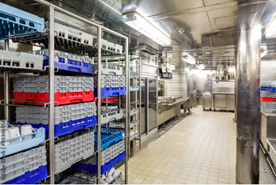Conducting a Risk Assessment to Assess Your Environmental Needs
 With the release of the SQF Code Edition 8, we made some important changes to strengthen and improve our program. One of the major changes we made was to the environmental monitoring requirement. In our May Newsletter, we explore the changes we made, dive deeper into the reasoning of why we made the change, and provide you with solutions on conducting a successful risk assessment.
With the release of the SQF Code Edition 8, we made some important changes to strengthen and improve our program. One of the major changes we made was to the environmental monitoring requirement. In our May Newsletter, we explore the changes we made, dive deeper into the reasoning of why we made the change, and provide you with solutions on conducting a successful risk assessment.
Environmental monitoring was previously listed within the GMP module. In Edition 8, we moved it to the system elements portion of our code. What we were finding is that sites weren’t identifying how they were assessing environmental monitoring in their facility, rather they were arguing why they were not a high risk facility. While we expect all food manufacturing sites to have environmental monitoring as part of their risk assessment, the level of the environmental monitoring program is based on the risk of the food manufacturing site.
This is not a mandatory element, so you may have some sites that can be exempt, or view this element as not applicable, but the site first needs to conduct a risk assessment to identify their environmental needs. However, the needs of the site can vary. The site could need an annual assessment or a daily assessment; it just depends on the risk to that facility.
The environmental monitoring approach hasn’t changed with what was put into module 11 and neither has the definition.
Recent Blog Posts
SQF Code Edition 10 represents a critical step forward in ensuring rigorous yet practical food safety management across the supply chain.
In an industry where compliance and operational integrity are nonnegotiable, manufacturers and suppliers need more than just certification — they need a globally recognized solution.
Renee McVey is one of the first industry professionals to hold the Safe Quality Food Institute’s new Certified SQF Practitioner credential, which is administered by Exemplar Global.




